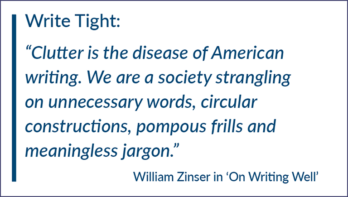What makes a story newsworthy – worthy of the name “news”? If you’re on deadline, the question may be “What do we have that’s ready to go?” In some work environments the question may boil down to “What has my boss told me I have to run?” But in the ideal world there are a number of qualities that contribute to the newsworthiness of a story.
A general definition is that news is what people want or need to know. It’s what editors and reporters think is interesting, or exciting, or important. Here are some of the qualities journalists look for in a story:
Timeliness: In the news business, newer is better, and stories grow old in a hurry. You can think of news as a baked good that is best served fresh — after a while it’s stale and nobody is interested. (The danger in this is that sometimes we’re in such a hurry to tell the story that we try to serve it before it’s ready).
Proximity: People are more interested in home-grown news than in news from far-away places. A toxic waste dump in Russia is mildly interesting. A toxic waste dump in your neighborhood is major news!
Impact or Consequence: Will the information in this story change our lives? Ask this question: “Does it matter?” Does your story pass the “so what” test?
Novelty or Rarity: Is it an unusual story? The old saying in the news business is that when a dog bites a man, it’s not news. For a while, U.S. churches sending missions teams to Russia was big news. Then it reached the point where it was almost more unusual for a church to not be sending people to Russia.
Conflict: In a novel-writing class, you learn that your story needs a conflict. A book about everybody being nice to each other all of the time and living carefree lives doesn’t exactly grab attention. But everybody loves conflict. That’s part of why the news seems so negative. The millions of people who don’t get murdered each day aren’t news. The few who do are. You’ve probably heard the cliche “no news is good news.” A lot of media outlets seems to follow the formula “good news is no news.”
Human interest: This is a little hard to define, but the general idea is that people are interested in other people. Taking a glimpse at somebody else’s life appeals to a voyeuristic part of human nature. A fire burning down an empty building doesn’t have nearly the human interest of a fire that burns somebody’s home, leaving a family homeless or killing somebody. We identify with other people, and that’s part of what gives a story human interest.
Prominence: This is part of human interest. People are more interested in famous people than in non-famous people. If Bob Johnson, a farmer from Nebraska, has an affair, it’s not going to make the newspaper. When the President of the United States has an affair, it’s front-page news. This is why “Lifestyles of the Rich and Famous” was a successful TV show, and why unsung heroes often remain unsung.
Those are the basic aspects of newsworthiness — timeliness, proximity, impact or consequence, novelty or rarity, conflict, human interest, and prominence. Few stories have all of these qualities, but most good ones have at least two or three.





